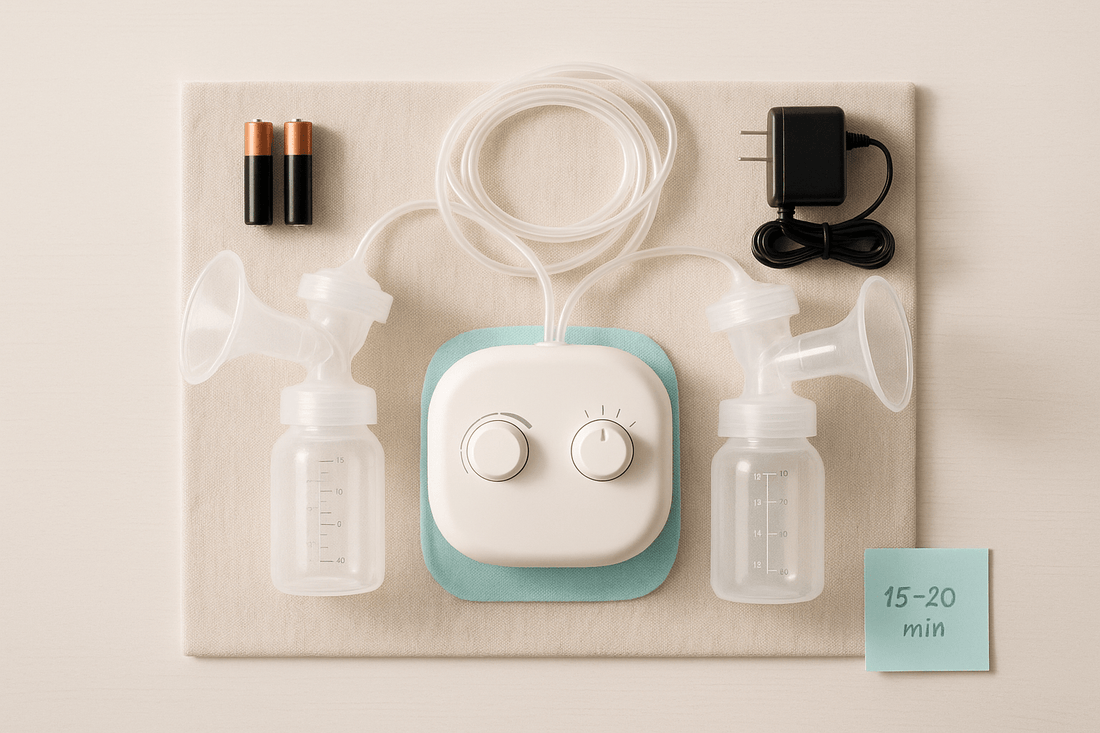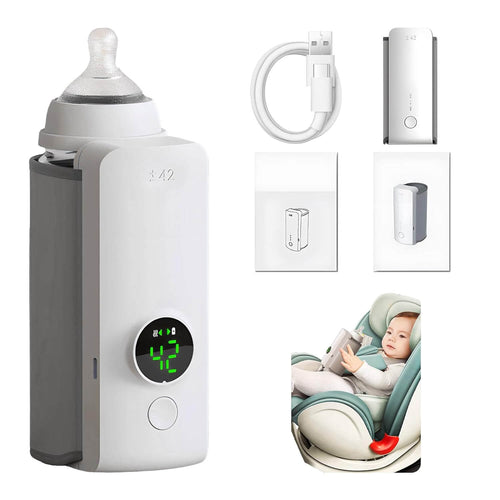
Evenflo Advanced Breast Pump — Complete Guide to Features
The Evenflo Advanced Double Electric combines a hygienic closed system with independent speed and suction controls, giving you up to 32 fine-tuned combinations for comfort and output. With AC power plus AA battery backup (and an optional car adapter), it’s built for home, office, or travel. Below you’ll find a spec-based overview, step-by-step setup, flange sizing, cleaning & storage, smart schedules, and advanced troubleshooting.
Key specs at a glance
- System: Hygienic closed system helps prevent milk entering tubing/motor for easier cleanup. :contentReference[oaicite:2]{index=2}
- Controls: Independent speed & suction; customizable combinations. :contentReference[oaicite:3]{index=3}
- Modes: Designed for multiple let-downs per session; adjust speed/strength directly on the motor. :contentReference[oaicite:4]{index=4}
- Power: Runs on AC adapter or AA batteries; many retailers list an optional car adapter. :contentReference[oaicite:5]{index=5}
- Noise/weight: Marketed as quieter & lighter than prior versions; “Hush” motor in some listings. :contentReference[oaicite:6]{index=6}
- Warranty: Up to 3-year motor warranty when registered (retailer/manufacturer pages). :contentReference[oaicite:7]{index=7}
Note: Packaging and bundles vary by region/retailer; confirm what’s included with your specific unit.
Controls: speed × suction (32 combos)
Unlike fixed “programs,” the Advanced lets you set speed and suction independently to reach your personal “sweet spot.” Aeroflow’s guide cites 32 possible settings crafted with lactation input for multi-let-down sessions. Start lower, increase slowly, and stay at the lowest effective level that maintains flow—this protects comfort and keeps you returning consistently. :contentReference[oaicite:8]{index=8}
Power & portability
Desk at work? Use the AC adapter. Commuting or pumping in the car? Pop in AA batteries, or use an optional car adapter where available. These options make the Advanced practical as a daily driver or a reliable backup in your bag. Keep a labeled pouch with spare AAs and a short extension cord for unpredictable outlets. :contentReference[oaicite:9]{index=9}
How strong is the suction?
Manufacturer/retailer materials commonly list suction around ~250 mmHg, with a technical sheet showing a 25–250 mmHg operating band. An independent test report observed ~280 mmHg single-side / ~230 mmHg double-side peaks—real-world output depends on assembly, seal, and fit. Use numbers as a guide, not a goal; comfort and consistency win. :contentReference[oaicite:10]{index=10}

Setup & first session
- Assemble & seal: Seat valves/diaphragms fully; push tubing snugly onto barbs; verify lids are closed to preserve the closed system. :contentReference[oaicite:11]{index=11}
- Center the nipple: The flange should sit flush without pinching or blanching.
- Dial-in gently: Start low; increase suction or speed in small steps until milk flows—then stop increasing.
- Hands-on: Gentle compressions during expression can improve drain and comfort.
- Timing: Double sessions usually run ~15–20 min; stop when comfortably empty.
- Comfort between sessions: For surface tenderness, some parents use silver nursing cups as a reusable soothing aid—remove before nursing or pumping.
Flange sizing (mm)
Fit drives output. Measure your nipple diameter in millimeters (exclude the areola) and choose the closest size—each breast may differ. Evenflo bundles multiple sizes in some kits (e.g., certain single kits include 28.0 & 30.5 mm); verify your box and consider extras if your measure lands between sizes. If you see rubbing, whitening, or lipstick-shaped nipples post-pump, reassess fit. :contentReference[oaicite:12]{index=12}
Cleaning & safe milk storage
- After each session: Wash milk-contact parts in hot, soapy water; rinse and air-dry. Sanitize per your manual.
- Fresh milk: Room ≤77°F (25°C) up to 4 h · Fridge up to 4 d · Freezer ~6 m best (≤12 m acceptable).
- Thawed: If thawed in fridge, use within 24 h; don’t refreeze; avoid microwaving.
- On the go: With frozen ice packs in an insulated cooler, milk typically stays cold for ~24 h; transfer at destination.
Sample pumping schedules
Return-to-work
- Before commute: nurse/pump → mid-morning pump (~10–15 min) → mid-afternoon pump → nurse at pickup/evening.
- Use your calendar + alarms for consistent windows; consistency > intensity.
Exclusive pumping
- Early weeks: 7–8 sessions/day (~2.5–3 h apart), then consolidate gradually.
- Aim for 120–150 total minutes/day; personalize with your clinician/IBCLC.
Combo feeding
- Swap one feed for a bottle and add a short pump at the same time daily to protect supply.
- Use paced bottle feeding to support latch and avoid over-feeding.
Comfort stack & privacy
- Noise damping: Rest the motor on a mouse pad to reduce vibration.
- Warm-up: 2–3 min warm compress → start lower level → step up slowly.
- Between sessions: Soothe with silver nursing cups if helpful (remove before attaching flanges).
- Protect time: Calendar blocks + “brief meeting” note reduce interruptions.
Parts care & replacement cadence
Output often rebounds when you refresh wear items:
- Duckbill valves/membranes: ~4–8 weeks with daily use; replace sooner if you see gaping or micro-tears.
- Tubing: Replace if it won’t dry, discolors, or loosens at the barbs.
- Flanges/shields: Swap if cracked/warped or if comfort declines despite correct sizing.
- Backflow parts: Replace after drops or if seals loosen.
Troubleshooting (advanced)
- Weak suction: Reseat valves/diaphragms; push tubing fully; verify lids are closed; refresh valves if worn. :contentReference[oaicite:13]{index=13}
- Milk in tubing: Replace affected tubing; inspect backflow parts; keep bottles level to reduce slosh-back.
- Uneven output: Try a different flange size on the lagging side; recenter; add gentle compressions.
- Condensation in tubing: Run the pump 1–2 minutes unattached to dry lines before storing.
- Soreness: Drop one level; add a brief “stimulation” burst mid-session; reassess flange size; shorten sessions and add one more in the day. Between sessions, consider silver nursing cups.
FAQ
Is the Advanced a closed-system pump?
Yes, it’s marketed as a closed system to help keep milk out of tubing and motor paths. :contentReference[oaicite:14]{index=14}
How many settings does it have?
Guides cite 32 combinations from independent speed and suction controls. :contentReference[oaicite:15]{index=15}
What’s the suction range?
Listings often mention up to ~250 mmHg; a technical sheet notes 25–250 mmHg; third-party tests saw ~280 single/~230 double peaks. :contentReference[oaicite:16]{index=16}
Will it run without an outlet?
Yes—use AA batteries, and some retailers offer a car adapter. :contentReference[oaicite:17]{index=17}


